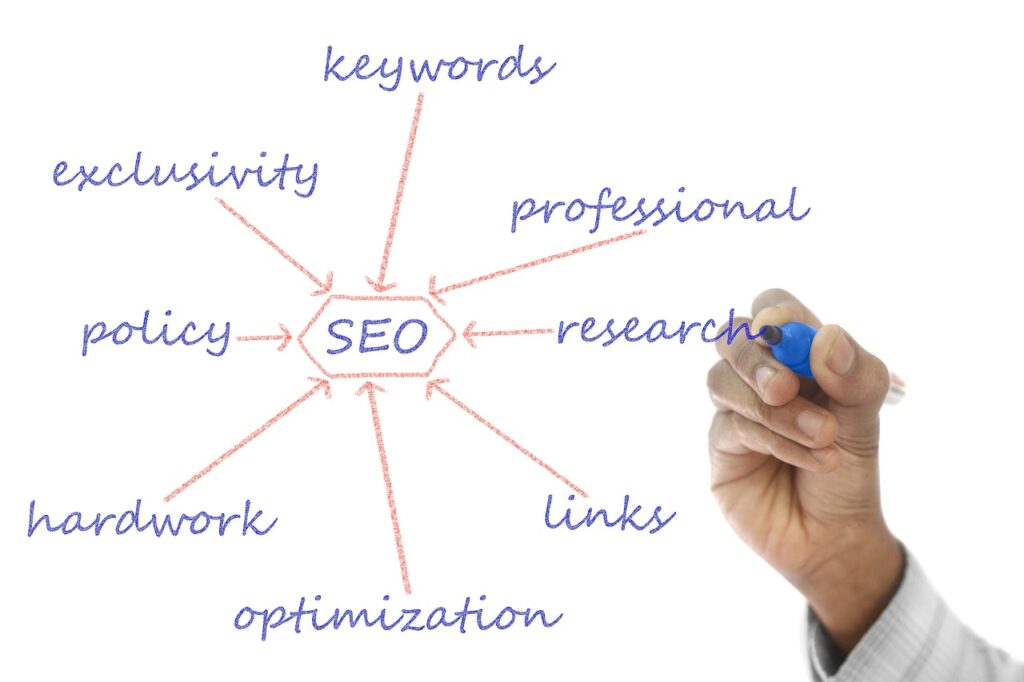Getting your website noticed online can be a challenging task. With limited resources and time, it’s easy to feel overwhelmed by all the different things that need to be done.
However, there are a few simple SEO fixes that can make a big difference in how visible your business is on the web. SEO (Search Engine Optimization) is crucial for driving organic traffic to your site, and you don’t need to be an expert to implement these changes.

1. Improve Your Title Tags and Meta Descriptions
Why It Matters
The title tag and meta description are two of the first things search engines like Google look at when determining how to rank a page. They aid consumers and search engines in comprehending the information on your pages. Your website might not be as apparent as it could be if they are ambiguous or absent.
What to Do
Ensure that the title tag for every page on your website appropriately describes the content of that page. For example, if you run a cafe, a good title tag for your homepage might be “Best Cafe in [Your City] | [Your Business Name].” Your title tag should include important keywords relevant to your business, but still be written in a way that sounds natural to human readers.
2. Optimize for Local Search
Why It Matters
Local search results are often displayed when people search for businesses near them. For example, if someone in your city types in “best pizza near me,” your business should be visible if you run a pizza restaurant.
What to Do
Start by claiming your Google Business Profile. This tool allows you to manage how your business appears in Google Search and Maps. Make sure your information, such as your name, address, phone number, hours of operation, and website link, is up-to-date. Adding photos of your business, encouraging reviews, and responding to customer feedback will also help improve your visibility in local searches.
3. Speed Up Your Website
Why It Matters
If your site is slow to load, visitors are likely to leave before they even see your content, which can increase your bounce rate and negatively impact your rankings. Google has also made it clear that page speed is a ranking factor, so a slow website could hurt your visibility in search results.
To better understand how your site’s speed affects its performance, consider running an SEO free trial to get insights on areas where improvements can be made. It will help your site load faster and rank better.
What to Do
Use tools to check your website’s load time and identify areas that need improvement. Some common ways to speed up a site include compressing large images, minimizing the number of plugins, and using a content delivery network (CDN) to speed up content delivery. Even simple steps like reducing the number of ads or using a faster hosting service can make a big difference in how quickly your site loads.
4. Ensure Your Site Is Mobile-Friendly

Why It Matters
Google uses mobile-first indexing, which means it looks at the mobile version of your site when determining how to rank it in search results. If your site isn’t mobile-friendly, it could hurt your SEO performance and make it harder for potential customers to find you.
What to Do
Check if your site is mobile-friendly. If it isn’t responsive, it may be time to switch to a mobile-friendly design. Many website builders and content management systems (CMS) offer templates that are already optimized for mobile. If you have a custom-built website, talk to a web developer about making your site responsive.
Additionally, make sure that buttons, links, and other clickable elements are easy to tap on mobile devices. Large text, readable fonts, and a clean layout will also improve user experience and make your site more appealing to visitors.
5. Create and Submit a Sitemap
Why It Matters
A sitemap is a file that specifies all the relevant pages on your website. It helps search engines like Google crawl and index your site more effectively. Without a sitemap, search engines might miss key pages or have difficulty finding all of your content, which can hurt your rankings.
What to Do
Many content management systems (CMS) like WordPress automatically generate sitemaps, but if you don’t have one, there are free tools that can help you create one. To make sure search engines can crawl and index your website, submit your sitemap to Google Search Console when it has been created. This is especially crucial for large, multipage websites.
In a Nutshell
Making small improvements to your website’s SEO doesn’t have to be difficult, and it can have a big impact on your visibility and traffic. Fixing things like title tags, optimizing for local search, improving speed, ensuring mobile-friendliness, and submitting a sitemap will allow you to quickly boost the SEO for your website and start seeing results.



